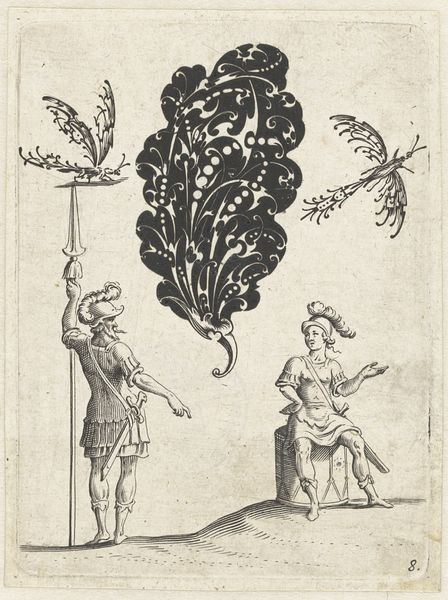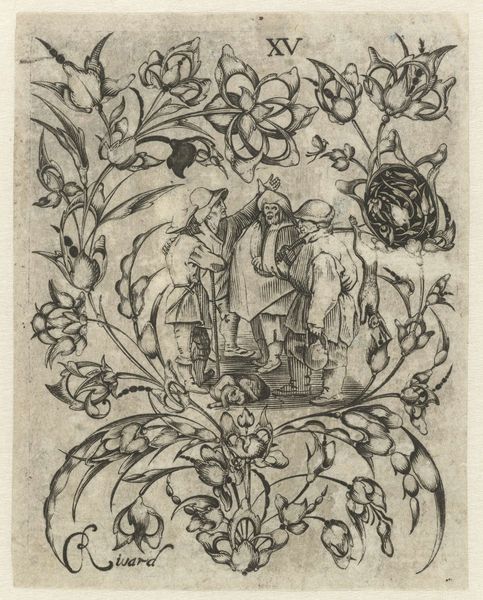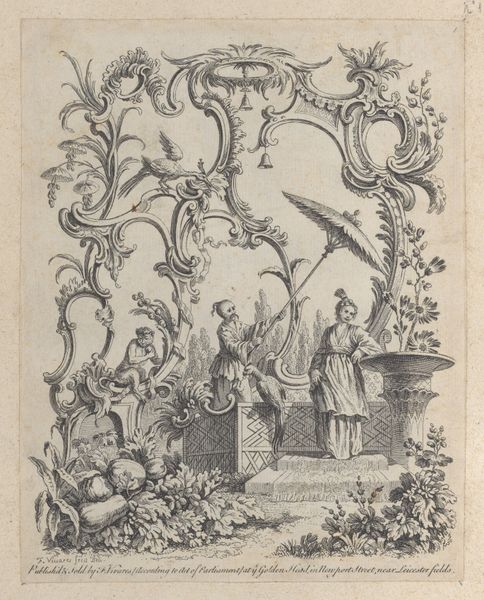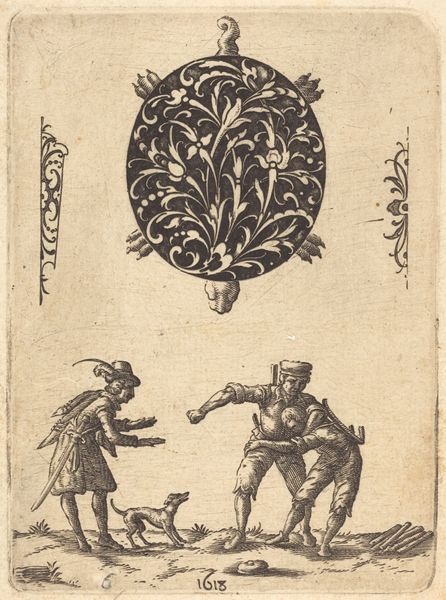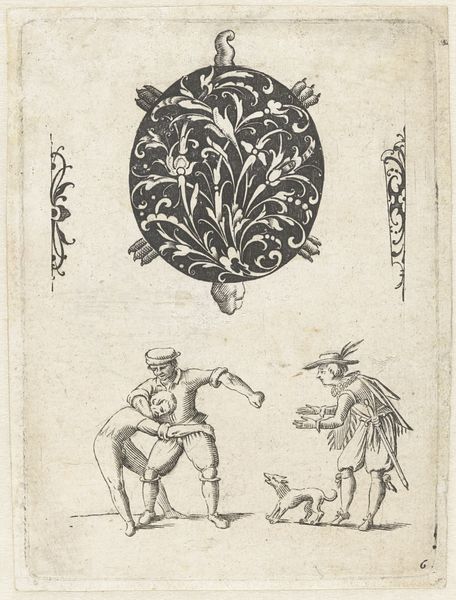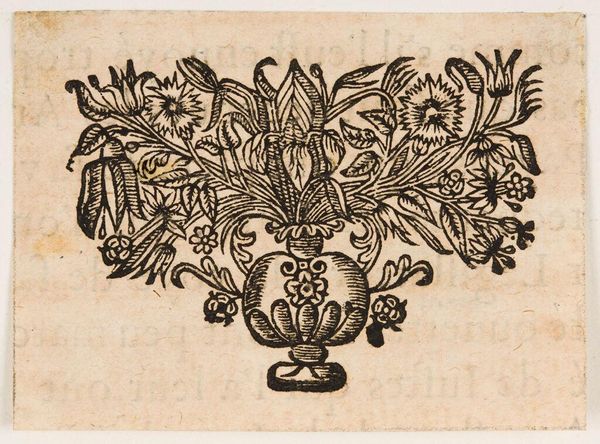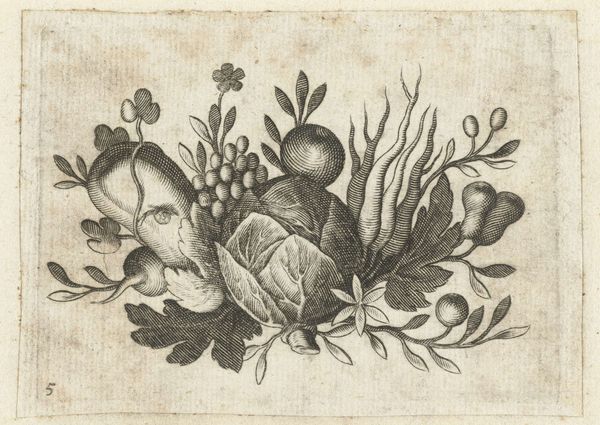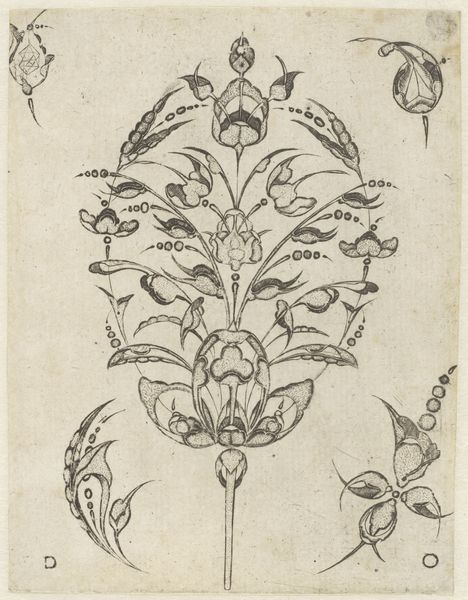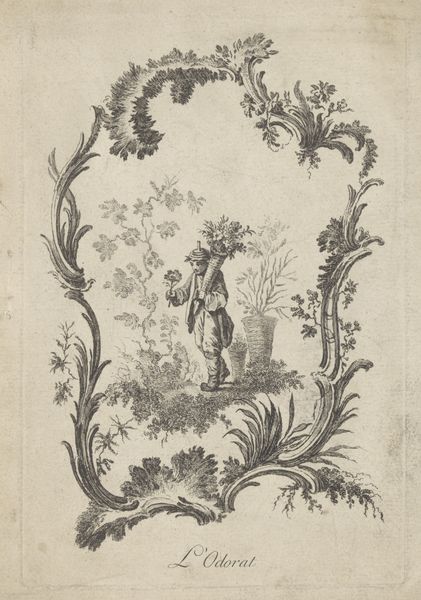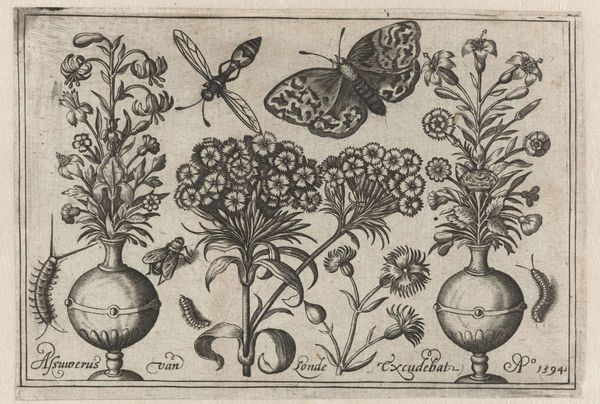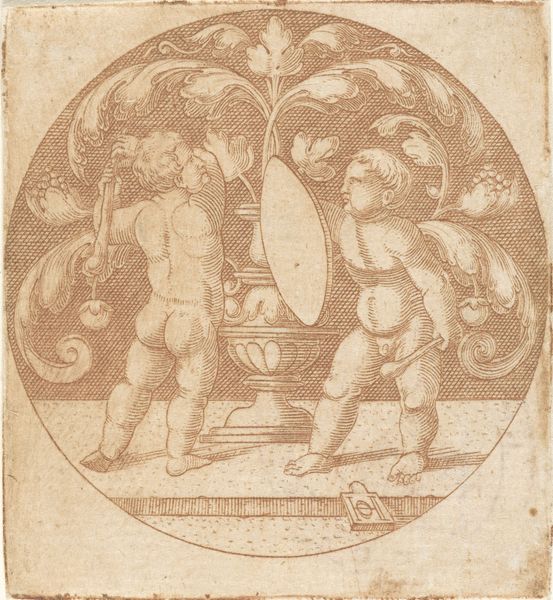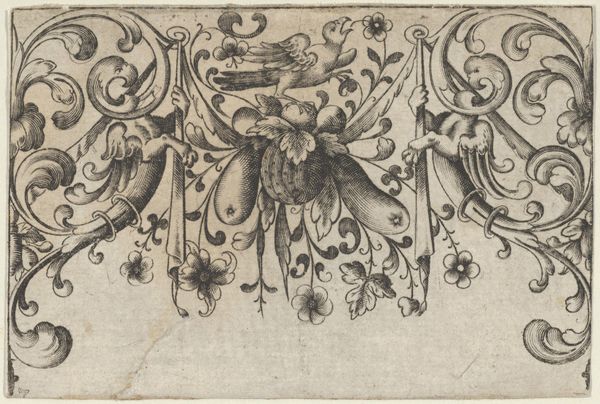
drawing, ornament, ink, engraving
#
drawing
#
ornament
#
baroque
#
pen drawing
#
figuration
#
ink
#
line
#
decorative-art
#
engraving
Dimensions: height 108 mm, width 80 mm
Copyright: Rijks Museum: Open Domain
Curator: This engraving from the Rijksmuseum is titled "Edelsmidsornament in de vorm van een blad," which translates to Goldsmith's Ornament in the Shape of a Leaf. It was created sometime between 1619 and 1694 by Jean Toutin. Editor: It's certainly a decorative piece. My eye is immediately drawn to the contrast between the elaborately ornamented leaf at the center and the simpler figural scenes at the bottom. It creates a sense of playful formality, if that makes any sense. Curator: Absolutely. Toutin was working in an era increasingly fascinated by detail, precision, and display. Considering its purpose, it's easy to imagine a goldsmith using this image as a guide or source of inspiration, maybe tracing it or adapting elements for metalwork. The proliferation of such ornament prints played a vital role in the wider dissemination of design and aesthetic ideas. Editor: The imagery also contributes to the feeling. The juxtaposition of the ornate leaf with those playful cherubs dragging a miniature beer barrel seems to celebrate earthly pleasures alongside natural beauty. And the stylized insects add a further touch of whimsical naturalism. Curator: Right, that connects with broader cultural shifts. This period witnessed increased social mobility and burgeoning consumerism, resulting in rising demand for luxury goods. We can almost picture the goldsmith incorporating these motifs into extravagant pieces intended for the increasingly wealthy middle class. These were emblems of status, meticulously crafted through specialized skills and labor. Editor: And don’t forget the power dynamics in workshops. Consider who designed this versus who executed it. It is about control and the visibility of design’s labor and the artist’s intent, really interesting questions around attribution and access. Curator: Good point. Ultimately, Toutin’s design encapsulates a complex intersection of social status, access to goods, and class structure, where nature provides a formal basis for celebrating an emerging prosperity through ornamentation. Editor: It really demonstrates the power of prints to reflect and shape the cultural values of its time. Curator: Indeed, by closely examining the object's context and construction, we get a clearer view of art’s interaction within the cultural fabric.
Comments
No comments
Be the first to comment and join the conversation on the ultimate creative platform.
